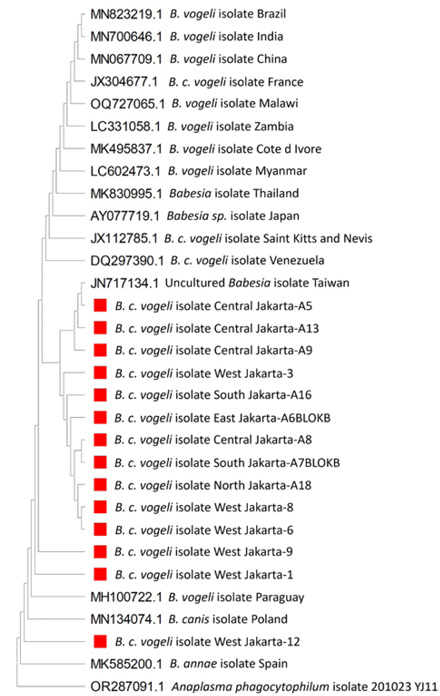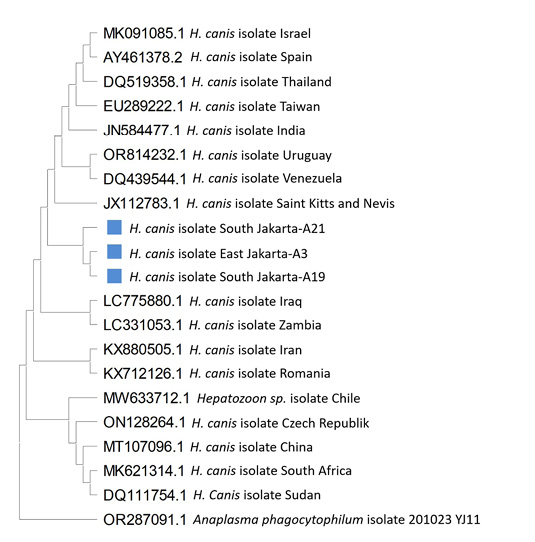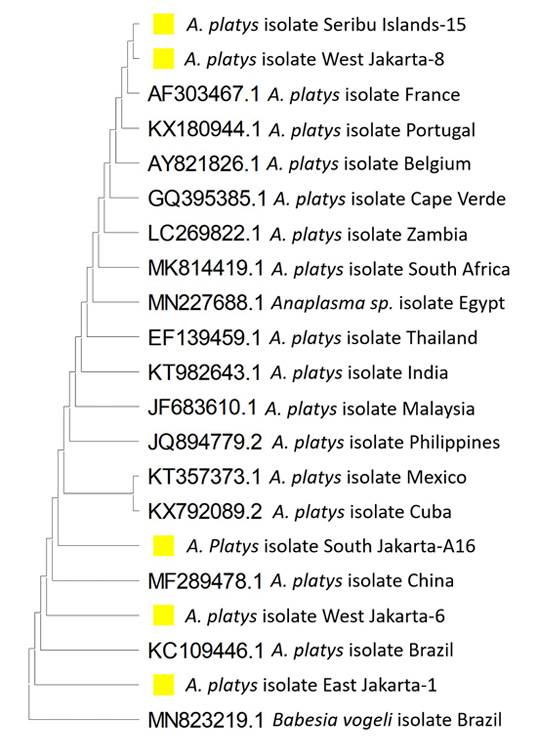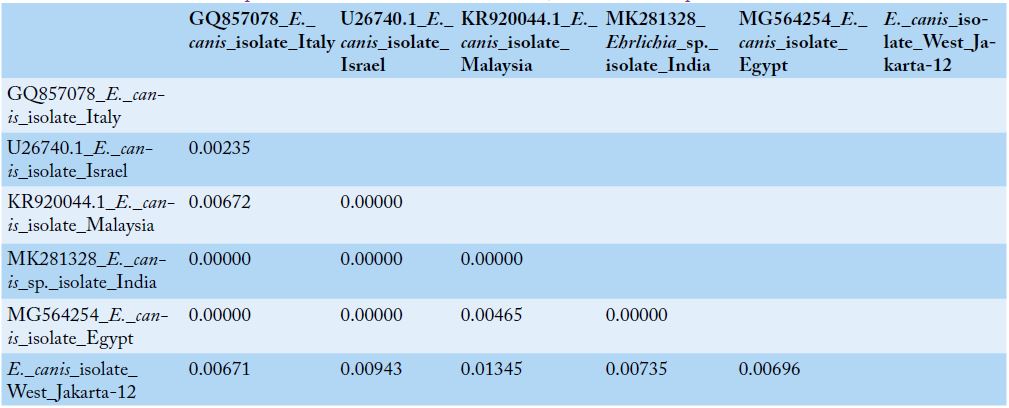Molecular Identification and Prevalence of Blood Parasites and Rickettsia in Stray Dogs in DKI Jakarta Province
Molecular Identification and Prevalence of Blood Parasites and Rickettsia in Stray Dogs in DKI Jakarta Province
Wirokartiko Satyawardana1,4, Umi Cahyaningsih2*, Fadjar Satrija2, Safika Safika3, Arifin Budiman Nugraha2
Phylogenetic analysis of the 490 bp Babesia canis vogeli sequence detected in this study (red label) and compared with GenBank accessions. The GenBank accession number and country of origin of the sequence are included for each sequence. Anaplasma phagocytophilum was used as the outgroup.
Phylogenetic analysis of the 490 bp Hepatozoon canis sequence detected in this study (blue label) and compared with GenBank accessions. GenBank accession numbers and country of origin of the sequence are included for each sequence. Anaplasma phagocytophilum was used as the outgroup.
Phylogenetic analysis of the 421 bp Anaplasma platys sequence detected in this study (yellow label) and compared with GenBank accessions. The GenBank accession number and country of origin of the sequence are included for each sequence. Babesia vogeli was used as an outgroup.
Phylogenetic analysis of the 421 bp Ehrlichia canis sequence detected in this study (green label) and compared with GenBank accessions. GenBank accession numbers and country of origin of the sequence are included for each sequence. Babesia vogeli was used as an outgroup.
Distance between pairs Hepatozoon canis isolates from Jakarta and comparison isolates.
Distance between Anaplasma platys isolates from Jakarta and isolates from Mexico and portugal.
Distance between pairs of Ehrlichia canis isolates from Jakarta and comparison isolates.














